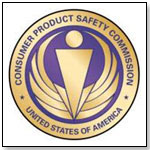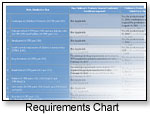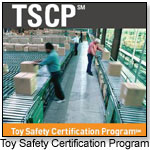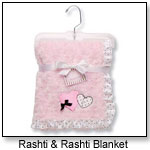 |

Tools:








Lead and Testing Under the CPSIAWhat Toymakers Need to Know About Testing, Tracking and Content Limits
| “ … keep in mind that the lead content rules are different from the lead in paint rules, which are now in effect and are not affected by the Stay.” |
If you’re a toy manufacturer, you know the regulatory landscape for your business was dramatically altered in summer 2008 with the enactment of the Consumer Product Safety Improvement Act (CPSIA). As the U.S. Consumer Product Safety Commission (CPSC) continues to enact regulations relating to this law, you are faced with the constant challenge of determining how the CPSIA and these regulations apply to your products. This article explores several basic components of the law.
TESTING PATIENCE
 Section 102 of the CPSIA has perhaps the greatest impact on toy manufacturers. It requires that all children’s products subject to a children’s product safety rule be tested by an independent third-party laboratory accredited by the CPSC. The law defines “children’s products” as consumer products primarily designed or intended for children age 12 or younger. Section 102 of the CPSIA has perhaps the greatest impact on toy manufacturers. It requires that all children’s products subject to a children’s product safety rule be tested by an independent third-party laboratory accredited by the CPSC. The law defines “children’s products” as consumer products primarily designed or intended for children age 12 or younger.
 Although the CPSC issued a stay of enforcement (Stay) of the third-party testing requirement for certain (but not all) products, manufacturers are still required to comply with the underlying bans as they become effective. The Stay, recently extended for another year, expires February 2011. (See chart on third-party testing certificate requirements.) Although the CPSC issued a stay of enforcement (Stay) of the third-party testing requirement for certain (but not all) products, manufacturers are still required to comply with the underlying bans as they become effective. The Stay, recently extended for another year, expires February 2011. (See chart on third-party testing certificate requirements.)
It is critical that a manufacturer select a qualified, reliable third-party laboratory for testing. The first step is to make sure it is on the CPSC’s list of approved labs for the particular test being performed (e.g., lead in paint, small parts, etc.). The CPSC website contains a list of these labs.
 Next, the manufacturer should consider other services offered by the lab that might add value to their product. For example, does the company offer product hazard and risk assessment, evaluation of the appropriate product age levels, and/or toy life cycle analysis? These services are particularly attractive for smaller toy manufacturers who may not have the expertise to conduct these analyses themselves or the industry contacts for these services. If you anticipate distributing a product overseas, be sure the testing company is familiar with international standards. Next, the manufacturer should consider other services offered by the lab that might add value to their product. For example, does the company offer product hazard and risk assessment, evaluation of the appropriate product age levels, and/or toy life cycle analysis? These services are particularly attractive for smaller toy manufacturers who may not have the expertise to conduct these analyses themselves or the industry contacts for these services. If you anticipate distributing a product overseas, be sure the testing company is familiar with international standards.
For toys distributed domestically, you may consider participating in the Toy Safety Certification Program (TSCP), recently implemented by the Toy Industry Association. One goal of the TSCP is to reduce redundant testing and therefore costs to the manufacturer.
KEEPING TRACK OF LABELS
Section 103 of the CPSIA requires that manufacturers, to the extent practicable, affix a tracking label or permanent mark on all children’s products and packaging that identifies the source of the product, the date of manufacture and more detailed information about the manufacturing process (such as a batch number). A manufacturer is expected to use reasonable judgment in determining what its labeling will look like, and a prudent manufacturer will take into account the labeling practices of peer companies. Factors to consider when developing a labeling policy include:
• Whether a toy is meant to be stored in a box, such as a board game (the board itself and the box must be marked, but the individual game pieces need not be marked);
• Whether a product is sold through a bulk vending machine (similar to the vending machines selling capsules containing small toys in a supermarket lobby), in which case a tracking label is not required;
• Whether a physical mark would damage the product or impair its utility;
• Whether the aesthetics of the product would be adversely affected (for example, small pieces of jewelry); and
• Whether the product surface would be difficult to mark, such as small pieces of fabric, beads, and elastic (for example, hair ornaments, jewelry, etc.)
In the last three examples above, a tracking label may not be required if the manufacturer can demonstrate that its policy is reasonable and consistent with the policies of its peers.
GETTING THE LEAD OUT
Section 101(a) of the CPSIA prohibits children’s products from containing lead in excess of the prescribed limit (currently 300 ppm). The Stay applies to the lead content rules (other than children’s metal jewelry, for which new rules went into effect in March 2009).
 Nevertheless, manufacturers are still required to comply with the underlying lead content rules. It is important to remember that the lead content ban applies to products in inventory as of February 2009, not merely to products manufactured after that date. Additionally, keep in mind that the lead content rules are different from the lead in paint rules, which are now in effect and are not affected by the Stay (i.e., third-party testing is required). Nevertheless, manufacturers are still required to comply with the underlying lead content rules. It is important to remember that the lead content ban applies to products in inventory as of February 2009, not merely to products manufactured after that date. Additionally, keep in mind that the lead content rules are different from the lead in paint rules, which are now in effect and are not affected by the Stay (i.e., third-party testing is required).
There are exemptions from the lead content ban, as the CPSC has identified products and materials for which it will not impose penalties (unless the manufacturer knew they contained excessive lead) because those products and materials do not typically contain excessive lead:
• Children’s products made of natural materials (such as wood, cotton, wool, or certain metals or alloys)
• Ordinary children’s books printed after 1985 (but not including vinyl bath books or other novelty books)
• Dyed or undyed textiles and non-metallic thread and trim used in children’s products (such as apparel and baby blankets)
Another exemption is where the excessive lead is limited to an inaccessible component part. A part is inaccessible if it is not physically exposed by reason of a sealed casing and does not become exposed through reasonably foreseeable use and abuse of the product. For example, a battery compartment of a toy is inaccessible if a screwdriver is required to open it.
JUST ONE WORD: PLASTICS
Section 108 of the CPSIA prohibits the sale or distribution of any children’s toy or childcare article that contains certain levels of specified phthalates. Phthalates are chemical compounds added to plastics to enhance their durability and elasticity and have been shown in some studies to have adverse health effects.
These standards went into effect in February 2009, although the CPSC stayed enforcement of these rules until February 2010. This stay, however, does not relieve manufacturers from their obligation to comply with the underlying standards. The phthalate ban also applies to products manufactured prior to February 2009 (i.e., products in inventory).
Before rushing to have a product tested, a manufacturer should first determine if it is covered by this ban. The phthalate ban applies to two classes of products: (i) all toys (products designed and intended for children age 12 or younger for use by the child when he or she plays), and (ii) all childcare articles (products designed or intended to facilitate sleep or feeding of children age 3 and younger or to help children with sucking or teething).
Thus, a product will be considered a toy if it has “play value.” The determination of whether a product is a “childcare article” is often more subtle. The fact that a child may sleep in a product does not necessarily mean that it facilitates sleep; all parents know that infants sleep much of the time and they are not selective as to where they sleep. But if the product was developed to promote sleep or is marketed as doing so, it is possible that it will be considered a “childcare article” for purposes of Section 108 and therefore should be tested for the presence of the prohibited phthalates.
SOCIAL NETWORKING – NOT JUST FOR TEENS
Online social networking sites such as Facebook and Twitter are catching on in the toy industry. Even the CPSC has adopted a social networking initiative.
Manufacturers often use these sites to market their products. A prudent manufacturer will monitor these sites to see what consumers are saying about its products so it can make improvements to address consumer complaints and promptly take steps to repair damage to its business reputation. Also keep in mind: You may have a duty to report defective products to the CPSC, depending on the nature and frequency of the complaints.
 Writer's Bio: Writer's Bio: Joanne M. Murray, an attorney with the Doylestown law firm of Antheil Maslow & MacMinn, concentrates her practice in the areas of business law, contracts and commercial transactions, as well as counseling consumer product manufacturers, testing laboratories and retailers on compliance with the CPSIA and related laws. She can be reached at jmurray@ammlaw.com or (215) 230-7500. Read more articles by this author
THIS BANNER IS AN AD:

• • • • • • • • • • • • • | • • • • • • • • • • • • |
Back to TDmonthly's front page
|  |
Advertise on TDmonthly

|

